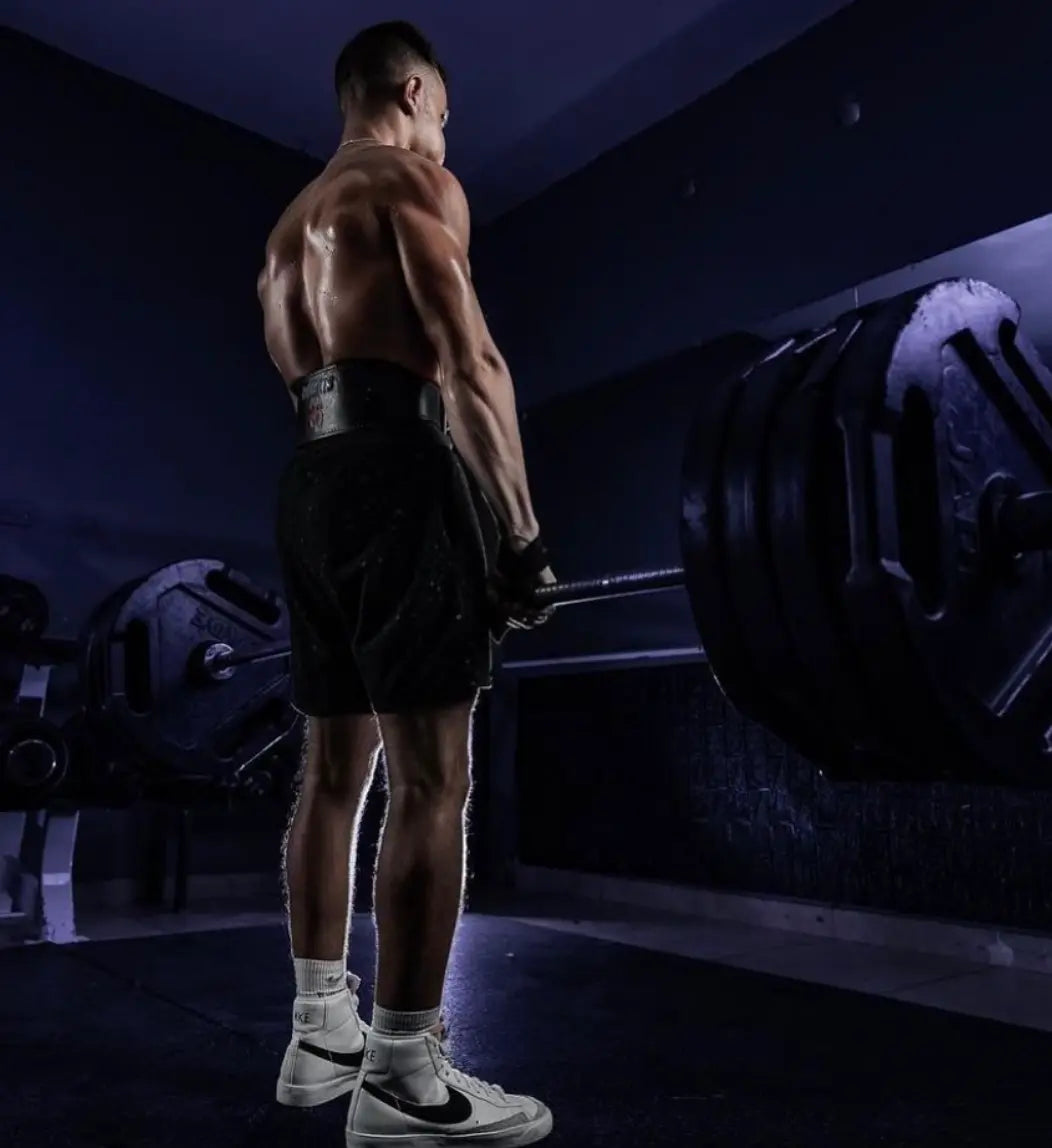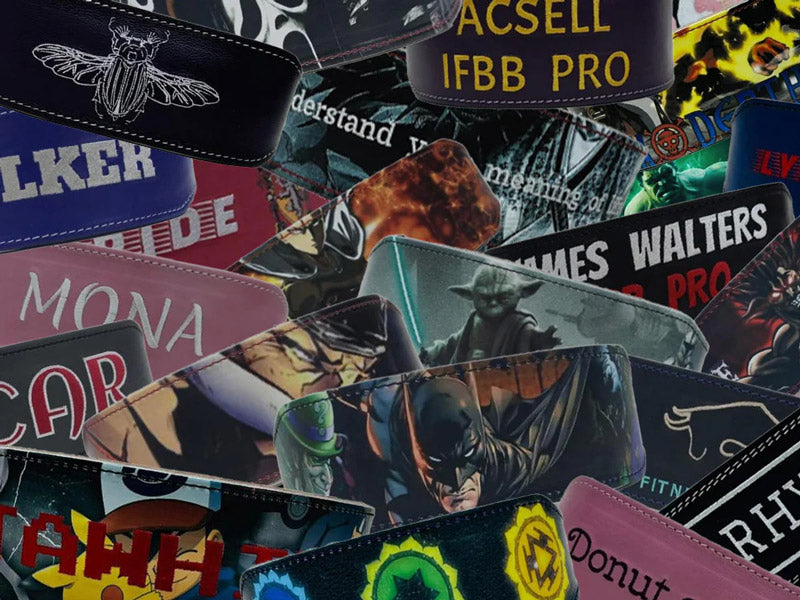
7 tips for getting past your deadlift plateau

As a lifter, few experiences are more satisfying than deadlifting a massive weight, then feeling the gym shake as it crashes back to the ground. People may ask you how much you bench, but real lifters know that the ultimate test of strength is the deadlift. Because hitting new deadlift PRs is so rewarding, it can often be frustrating when you just can’t seem to add any weight to your favorite lift from week to week. Don’t give up! Here are 7 tips you can use to get out of your deadlift plateau
1. Lower the weight, and crank out more reps
Conventional wisdom is that you have to lift in the 2-5 rep range if you want to get stronger. This is true to some extent. When you lift super heavy weights for low reps, you're training your nervous system to recruit as many muscle fibers as possible, which makes you stronger. Here's the problem. Strength can be broken down into two components: Firstly, the number of muscle fibers you are able to activate during a given movement, and secondly, the thickness of those fibers. The problem with exclusively doing low rep high weight sets is that while they are great for helping you maximize your nervous system output, they're not so good for growing muscle. If you're only deadlifting heavy weights for low reps, you could be plateauing because you've already maximized your neurological output without increasing your muscle mass. If this is the case, you should probably back off from the heavier weights for 4 to 6 weeks and do sets with a lighter weight in the 6-10 rep range. Then, when you go back to doing heavy, low-rep sets, you should be able to progress more rapidly.
2. Focus on your weak points
The portion of the deadlift that is hardest for you can help you identify which of your deadlift muscles are weakest. You can use this knowledge to choose accessory exercises that strengthen these weak points. For instance, if you struggle to get the bar off the floor, you probably have weak quads or lats. Rows of any kind are the best way to build your lats, while barbell squats, hack squats, and leg presses are the most valuable tools for beefing up your quads. If you have a tendency to get halfway up before your muscles give out, it probably means you have weak hamstrings. Romanian or stiff-leg deadlifts are the best way to build hamstring size and strength. Finally, if you struggle to lock out your deadlifts, the culprit is probably your glutes or lower back. Hip thrusts and block deadlifts are great for your glutes, and good mornings and back extensions will help you strengthen your lower back.
3. Do your deadlifts FIRST!
Deadlifts are the most physically and psychologically exhausting lift you can do in the gym, so if you wait until the end or middle of your workout to do them, you'll be too tired to give them everything you've got. You might even succumb to the temptation of skipping deadlifts altogether. That's why you need to do them at the beginning workout when you're fresh and motivated. Of course, after a few grueling sets, you'll probably not want to do much heavy lifting afterward, so I would either have one day of the week exclusively dedicated to deadlifting or schedule it alongside lighter exercises for muscles that aren't involved in the deadlift. Personally, I like to do biceps and side delts on my deadlift day because it takes less energy to get a good session of arms and shoulders than it does to work your back, chest, or quads. If you're deadlifting right, you'll be too tired to do squats or bench press afterward.
4. Do a "mini" deadlift day.

It takes a long time to recover from deadlifts, so I wouldn’t recommend doing heavy sets more than once a week. However, a single session a week might not give you enough time to perfect your deadlifting technique. As such, I would recommend incorporating a few “mini” deadlift sets on one of your non-deadlift days. For these sets, you should be doing 3-5 reps with 50% of your one rep max while focusing exclusively on technique. Pay special attention to keeping your lats tight and your lumbar spine in a neutral position. It might help to do this near a mirror so you can see yourself and ensure your form is perfect. You should mix these mini sessions into your weekly workouts because, during heavy deadlift sessions, you’re often so focused on getting the bar off the floor that you let your form get sloppy. Doing a few mini sets a week where you focus exclusively on executing the lift with the perfect technique will help you develop good lifting habits. This, in turn, will prevent you from injuring yourself and help you develop greater strength in the long run.
5. Take time to relax!
Your body needs downtime to rebuild the muscles you break down during your workouts. Sleep is key. You are seriously limiting your strength potential if you get less than 7–9 hours of sleep every night. You also want to make sure you're managing your stress levels. When you're under stress, your body releases a hormone called cortisol that lowers your testosterone levels and inhibits your body's ability to build muscle. While stress is an inevitable part of everyone's lives, you can help reduce it by planning your day, so you aren't overwhelmed, meditating, and spending quality time with family and friends. You also want to make sure you're managing the fatigue that working out generates. Like I said earlier, I don't recommend doing more than one heavy deadlift session a week, and you should always make sure that you take at least one day off a week from lifting weights. Additionally, if you have not made progress on any of your lifts for a while, this could be a sign you need to take a whole week off to recover.
6. Get your diet right.

Growing muscle requires a lot of energy, so you need to make sure your body is getting the fuel it needs. Unless you're overweight or a newbie lifter, you need to be in a caloric surplus, meaning you should be eating more calories than you burn so that your body will use that extra energy to build muscle. It shouldn't be more than 200–500 calories on top of what you would eat to maintain your body weight. If you eat too many calories, it won't help you get stronger any faster. It'll just make you chubbier. If you're putting on more than 0.5% of your body weight each week, most of that weight will be fat. However, if you are not gaining any weight from week to week, you can afford to add some calories to your diet. On top of the energy required to build muscle, your body also needs raw material, and that raw material is protein. Not eating enough protein can seriously hurt your deadlift gains. How much is enough? I make sure that I eat about 1 gram of protein per pound of body weight every day. That should be more than enough. Eating more won't hurt you, but it probably won't help you get stronger, either. Your body also needs vitamins and minerals to get stronger, so make sure you eat plenty of fruits and veggies. It might also help to take a multivitamin every day. Additionally, creatine is a legal, safe supplement that has been scientifically proven to boost strength.
7. Make sure you have the right gear
Want to increase your deadlift by 15% instantly? Start using a lifting belt!

Wearing a belt while lifting helps stabilize your core, which, in addition to helping you move more weight, also helps prevent lower back injuries that will halt your progress altogether. There's a reason everyone wears belts at powerlifting meets! Another essential piece of equipment that can instantly boost your deadlift is lifting straps. Lifting straps help you grip the bar, and since grip strength is the limiting factor on the deadlift for many people, straps could increase your deadlift by another 10-20%. If you're training for a powerlifting competition in which straps are illegal, you can help improve your grip using chalk. Some gyms provide chalk, but if yours doesn't, you can always carry a little pouch of it in your gym bag.
Summing things up
If you're experiencing a deadlifting plateau, backing off from heavy weight, low rep sets while focusing on building muscle, improving technique, and managing fatigue will help you get back to making progress. Also, you need to remember that what you do outside the gym is just as important as what you do inside of it. Make sure you get plenty of sleep, manage your stress, and eat enough protein and calories so your body can recover from your workouts. Adding weightlifting equipment like belts, straps, and chalk will lead to instant deadlift gains while reducing your risk of injury. Following these tips will help you surge past your deadlift plateau and get back to pulling monstrous PRs. Now go deadlift!





